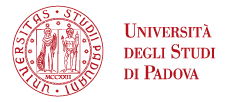
Cellular Replicative Potential: Telomere/telomerase
Research Topic
The acquisition of unlimited replicative potential represents a fundamental hallmark of cancer cells. Central to this process is the interplay between telomeres and telomerase, which critically drives sustained cellular proliferation and promotes tumor initiation and progression.
Telomere shortening, which occurs at each cell division, restricts cell proliferation in normal somatic cells and reflects cell turnover and exposure to oxidative and inflammatory damage, crucial events in cellular senescence and biological ageing. Many tumour-based studies have shown that cancer cells generally have shorter telomeres than those of the adjacent non-cancerous mucosa, strongly supporting the concept that telomere erosion is a critical event in carcinogenesis. Maintenance of telomere length, required for the unlimited cell proliferation displayed by cancer cells, is provided by reactivation of TERT, the catalytic component of telomerase. TERT, usually absent in normal somatic cells, is expressed at variable levels in tumors, and specific mutations in its promoter influence TERT levels. Besides maintaining of telomere length, TERT has other biological activities contributing towards a more aggressive phenotype of cancer cells. Understanding the mechanisms affecting proliferative potential and cellular senescence may allow us to identify new prognostic and predictive biomarkers and develop innovative therapeutic approaches.
Research activities
Our research group has established molecular assays based on multiplex PCR and digital PCR to quantify telomere length, TERT mRNA levels, and telomerase activity. Through collaborative studies with clinical centers, we have demonstrated that tumor telomere length, TERT expression levels, and/or TERT promoter mutations represent independent prognostic factors for adverse clinical outcomes in both solid tumors and hematologic malignancies (Rampazzo E et al., Haematologica 2012; Rampazzo E et al., Haematologica 2017; Terrin L et al., Clin Cancer Res 2008; Bertorelle R et al., Br J Cancer 2013; Giunco S et al., Front Oncol 2021; Giunco S et al., ESMO Open 2023). We further showed that telomere length in non-malignant mucosal cells adjacent to head and neck tumors may serve as a biomarker of field cancerization and predict local recurrence (Rampazzo E et al., Oral Oncol 2015; Boscolo-Rizzo P et al., Sci Rep 2019). Moreover, plasma-based quantification of TERT transcripts may provide a minimally invasive tool for disease monitoring (Terrin L et al., Clin Cancer Res 2008), for assessing response to neoadjuvant therapy (Rampazzo E et al., Br J Cancer 2018; Rampazzo E et al., Cancers 2020), and as an early biomarker of tumor onset (Cangemi M et al., Front Oncol 2021). In elderly individuals, we have demonstrated that an accelerated aging profile is associated with increased susceptibility to cancer development and progression (Falci C et al., Exp Gerontol 2013; Giunco S et al., Aging 2019). In addition, in vitro studies demonstrated that high levels of TERT improve resistance to apoptosis in tumor cells exposed to antineoplastic agents and that telomerase inhibition, both in vitro and in vivo models, induces DNA damage randomly and cell death, thus suggesting that, besides maintaining telomere length, telomerase may have extra-telomeric functions and its inhibition can be exploited for therapeutic purposes also in the in vivo context, independently of telomere length and erosion (Giunco S et al, Clin Cancer Res 2013, Celeghin A et al, Cell Death Dis 2016; Giunco S et al, Cancers 2020; Amin A et al., Cancers 2023).
Ongoing Studies
1) Evaluation of the predictive and prognostic significance of both tumor-derived and constitutional telomere length, as well as of telomeric repeat-containing RNA (TERRA) transcripts, in relation to therapy response and disease progression;
2) Investigation of the prognostic value of tumor-associated TERT expression and circulating TERT levels in patients with solid and hematologic malignancies;
3) Characterization of the extra-telomeric functions of TERT in both virus-driven and virus-independent malignancies, using in vitro and in vivo experimental models;
4) Assessment of TERT as a therapeutic target capable of inducing short-term clinical benefit, irrespective of the telomere length of cancer cells.
5 selected publications
Amin A, Morello M, Petrara MR, Rizzo B, Argenton F, De Rossi A, Giunco S. Short-Term TERT Inhibition Impairs Cellular Proliferation via a Telomere Length-Independent Mechanism and Can Be Exploited as a Potential Anticancer Approach. Cancers (Basel). 2023;15(10):2673. doi: 10.3390/cancers15102673.
Giunco S, Zangrossi M, Dal Pozzolo F, Celeghin A, Ballin G, Petrara MR, Amin A, Argenton F, Godinho Ferreira M, De Rossi A. Anti-Proliferative and Pro-Apoptotic Effects of Short-Term Inhibition of Telomerase In Vivo and in Human Malignant B Cells Xenografted in Zebrafish. Cancers (Basel). 2020;12(8):2052. doi: 10.3390/cancers12082052.
Celeghin A, Giunco S, Freguja R, Zangrossi M, Nalio S, Dolcetti R, De Rossi A. Short-term inhibition of TERT induces telomere length-independent cell cycle arrest and apoptotic response in EBV-immortalized and transformed B cells. Cell Death Dis. 2016;7(12):e2562. doi: 10.1038/cddis.2016.425.
Giunco S, Dolcetti R, Keppel S, Celeghin A, Indraccolo S, Dal Col J, Mastorci K, De Rossi A. hTERT inhibition triggers Epstein-Barr virus lytic cycle and apoptosis in immortalized and transformed B cells: a basis for new therapies. Clin Cancer Res. 2013;19(8):2036-47. doi: 10.1158/1078-0432.CCR-12-2537.
Rampazzo E, Bonaldi L, Trentin L, Visco C, Keppel S, Giunco S, Frezzato F, Facco M, Novella E, Giaretta I, Del Bianco P, Semenzato G, De Rossi A. Telomere length and telomerase levels delineate subgroups of B-cell chronic lymphocytic leukemia with different biological characteristics and clinical outcomes. Haematologica. 2012;97(1):56-63. doi: 10.3324/haematol.2011.049874.
Funding
AIRC
Ricerca Finalizzata-Ministero della Salute
IOV 5x1000
Personnel involved
Silvia Giunco, Researcher (RTDb)
Group members
Maria Raffaella Petrara, IOV Health Researcher
Jacopo Lidonnici, PhD student
Marzia Morello, IOV Fellow





